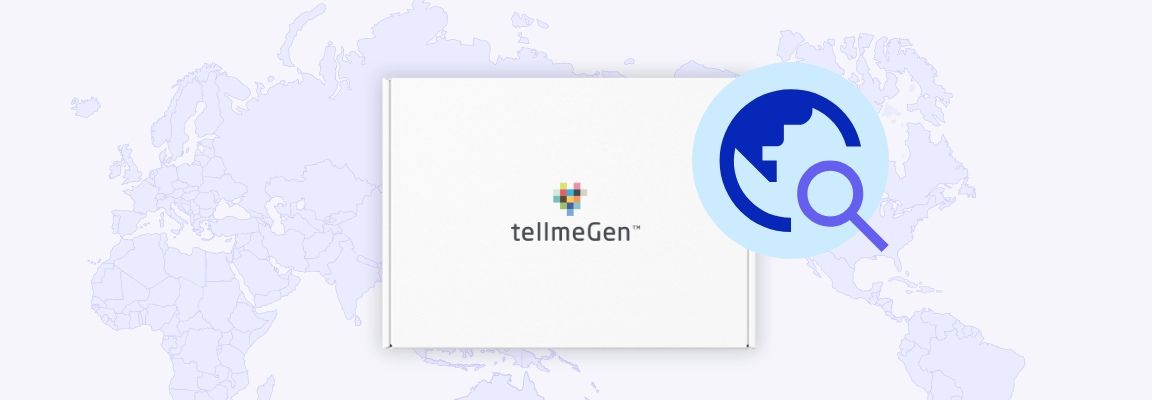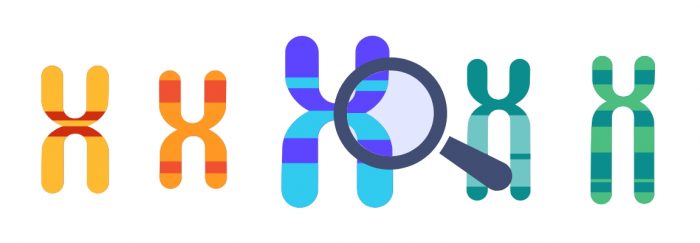Genetic sequencing is the process of determining the order of nucleotides in an organism’s DNA. As the name suggests, it refers to knowing the sequence of the bases that make it up: guanine, adenine, thymine, and cytosine.
Genome sequencing is a specific type of genetic sequencing, with key points.

What is Whole Genome Sequencing?
First, a brief reminder of what a genome is: all the DNA of an organism. When we say all, we mean everything, not just the genetic material found within the cell nucleus.
In humans, their genome would also include the genetic material of the mitochondria, which float inside the cell, quietly producing energy at their own pace.
Genome sequencing is a type of genetic sequencing that aims to determine the order of the entire genome of an individual. Everything.
Sequencing a person’s DNA is ambiguous. We know that part of their genetic material has been sequenced, but we don’t know how much or which part. However, if you are told that a genome sequencing has been done, it indicates that their entire genetic material has been sequenced.
With the immense amount of information it provides.
Another surprising detail is how easy it is to obtain the original sample.
Only a saliva sample is needed to analyze a person’s entire DNA. The genetic information contained in the cells inside your mouth is the same as that of any other cell (except for sex cells).
All the cells in your body have the same genetic material. Their differences are due to which parts of the DNA they express, how much they express it, and when they express it.
Thanks to this, a skin cell from inside your cheek can give us information about your predisposition to have green eyes. Simply, the genes responsible for that are not active in the same way in the epithelial cells.
Is whole genome sequencing as useful as it seems?
No. It’s more useful than it seems.
Currently, there are many reasons to undergo whole genome sequencing.
Any information obtained by sequencing methods is available through whole genome sequencing, although working with so much data can be more labor-intensive.
What information can be extracted from genome sequencing?
- Ancestry, including paternal and maternal lineages, and information on hybridizations such as your Neanderthal DNA percentage.
- Health, knowing if you have alterations caused by genes or the risk of developing them based on your genetic variants. If they are monogenic conditions like cystic fibrosis, you’ll know with total certainty.
- Obtaining variants of uncertain significance. These are variants within the DNA whose effect on a person’s health is still not understood, but with this methodology, they are recorded.
- Physical traits, the phenotypic expression in the person. The visible expression of genes on their body.
- Mitochondrial DNA. Many genetic tests omit it as it is located in the cell nucleus, but whole genome sequencing always takes it into account.
One advantage is that by obtaining everything, there are DNA fragments that currently do not provide information but may do so in the future.
As mentioned earlier, there are unknown genes. We have variants of uncertain significance. There are entire regions of non-coding DNA (which don’t carry information to produce proteins) whose function we don’t yet know.
That’s the key: currently. In five years, genetic sequences that seem indecipherable to us now may be the key to interpreting physiological processes where we have significant gaps in information.
Whole genome sequencing contains everything and is forever. That’s why it is important to remember that the process takes more time than other protocols that focus on specific fragments and genes.
You’ll need a bit more patience if you want a product with the correct quality reviews and the proper analysis.
Another additional advantage is its price.
In 2007, it was estimated that sequencing a person’s genome at that time cost around a million dollars.
In the following years, a challenge was set: to make whole genome sequencing cost less than $1,000. That moment could finally be considered when it became an affordable process for most people.
The price of genome sequencing has now achieved that. It costs less than $1,000.
Another advantage gained over the years is the time it takes to do whole genome sequencing.
The first took years. Now, the world record is five hours, and in critical clinical cases, where the patient’s health or even life is at risk, it can be done in one day.
However, for the rest of us, who rely on having acceptable health, the time it takes for a whole genome sequencing is measured in weeks. It depends on the methodology used and the controls that are performed.
For example, 30x whole genome sequencing is an advanced methodology that guarantees a much more detailed and accurate coverage of your DNA.
This 30x approach means that each sequence of your genome is read, on average, 30 times, ensuring greater accuracy in the results and more precise detection of genetic variants.
Unlike other methodologies with less coverage, 30x sequencing provides greater accuracy in analysis, minimizing possible errors and improving the overall data quality.
If you want to know your DNA to the fullest, it is a highly recommended methodology, although it requires time.
And if you have a little more patience, tellmeGen can get you that perfect product with so many practical uses throughout your life.



